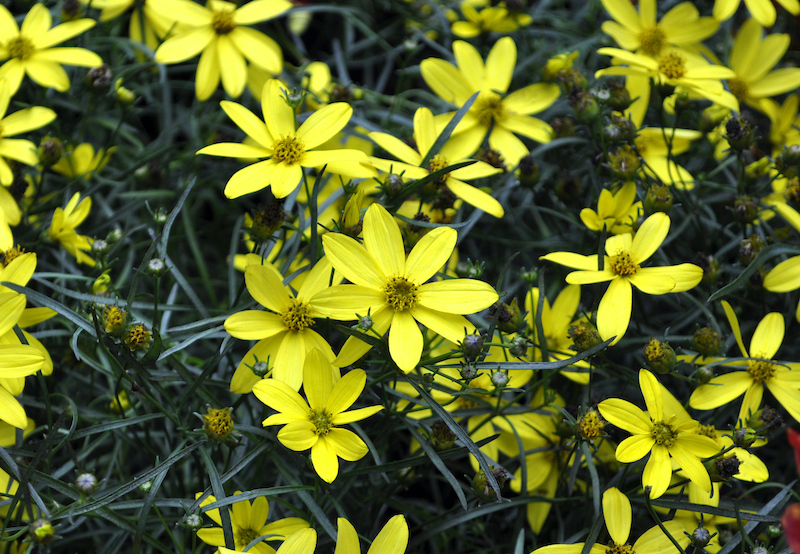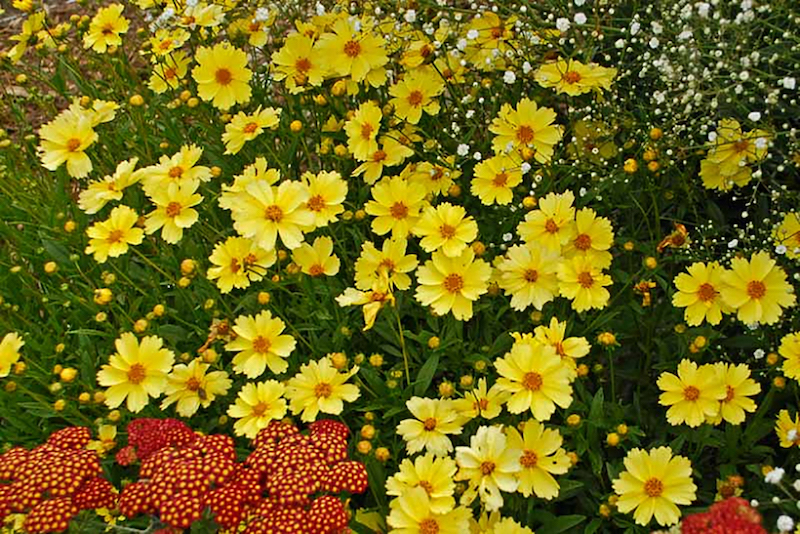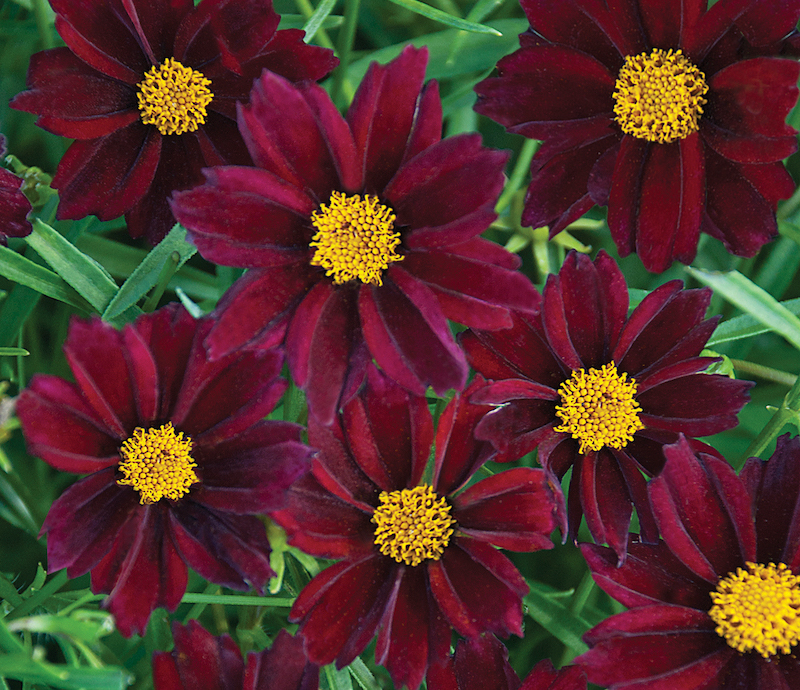Tickseed, also known by its scientific name, Coreopsis, includes approximately 115 species of herbs that are native to the North American region. These plants can produce flowers in an array of colors such as yellow, orange, rose, lavender, and white, as well as multi-colored flowers. One of their best features is the fact that they have a long bloom period, from spring to autumn.
They are also relatively compact, as their height and spread range between just 1 and 3 feet. Tickseeds perform best in growing zones that range from 4 and 10 and require a minimum of 6 hours of full sun exposure each day. These plants are fairly low maintenance, making it easy for gardeners to keep them healthy and looking great.

Planting Tickseed
These plants thrive when exposed to full sun, so select an area where they can get the right exposure. Sow the seeds in your selected location, but wait to do so until after the last spring frost. They prefer well-drained soil with a pH that ranges between 5.5 and 6.5. They are adaptable and can tolerate dry soils after they’ve been established. Make sure to leave 12 to 18 inches of space between your plants.

Watering Tickseed
After planting, ensure the soil is well watered. A good rule of thumb is to water generously every couple of days. Once your tickseed plant is established, you won’t need to worry about watering it nearly as much. You may only have to water it if your plant is wilting or experiencing a long drought. Fortunately, as previously mentioned, the majority of tickseed plants can handle a bit of drought.
Fertilizing Tickseed
Although fertilizer isn’t necessary, you may consider feeding if your tickseed’s flowers are on the smaller size or if your plant is blooming less. The ideal choice for tickseed is a granular 10-10-10 NPK fertilizer. This balanced fertilizer will give your plant all the nutrients it needs to thrive, and will also break down quickly. You can apply a light amount when new growth appears.

Pruning Tickseed
If you have large-flowered tickseeds, you can remove all over-wintered foliage and cut the stems down to the ground. This should be done preferably in early spring before the new growth cycle. If you notice the flower petals are drooping or falling off, you can cut back the flower stems to the plant’s crown. Lastly, you can leave a few stems during the later part of the season to allow your tickseed to self-seed. For thread-leaf tickseed, remove over-wintered stems in early spring. You can also shear back your whole plant by about half after the flowers have faded.
Caring For Tickseed in Pots
Tickseed plants can also be grown in containers. If you want to grow your plant in a pot, choose one that is no less than 8 to 10 inches in both depth and width. The pot will need drainage holes that allow water to escape from the bottom, as these plants don’t like wet feet. Furthermore, because tickseed needs at least 6 hours of direct sunlight per day, make sure your container is in a sunny location. Note that soil dries out more quickly in a pot, so make sure to check the moisture level on a regular basis as your pot may require more frequent watering.
Winter Care for Tickseed
Tickseeds can benefit from leaving the spent stems and foliage in place over the winter to help with insulation and protecting your plant’s crown from low temperatures. However, if you prefer things tidy, you can cut your plant down to no more than 4 to 6 inches above ground level. During these colder months, you must avoid the use of any fertilizer. Trying to promote growth during this time will be wasteful as the foliage won’t be able to withstand the first frost. You should, however, use mulch. Apply a layer that is about 3 or 4 inches thick around your plant. Doing so will keep your tickseed’s roots warm.
Common Questions About Tickseed
Why Is My Tickseed Dying?
Tickseed, or Coreopsis, are mildly prone to fungal infections, which are easily and quickly spread and may eventually cause the plant to die. Watering from the top (with a sprinkler or even too much rain) or living in the soil that does not drain well, leaves them ripe for crown, root, or stem rot, all of which can be treated with available fungicides.
How Do You Keep Tickseed Blooming?
Deadheading, or removing spent blooms, is the best way to encourage additional flowering. Doing so will also prevent them from going to seed and spreading quickly.
Is Tickseed An Annual Or Perennial?
Tickseed is a perennial that is easy to grow and care for.
Should I Deadhead Tickseed?
Deadheading coreopsis will help to promote additional blooms as well as seed production, if you don't want them to self-seed and spread.
Have a question about Tickseed? Fill out the form below and we will try and get back to your question as soon as possible. We may even feature your question in this article to help other gardeners!
 |
Author Chris Link - Published 07-26-2022 |
